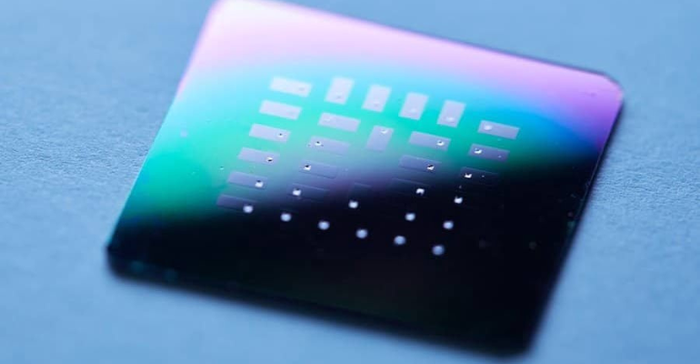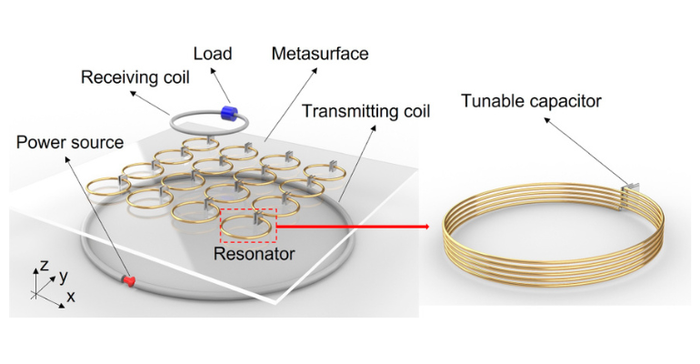Researchers explore alternate power sources to reduce medtech's dependence on batteries.
September 1, 2022

Finding a way to reduce the dependence of implantable medical devices on batteries has long been a holy grail concept among researchers.
Two recent university lab projects – one at the Massachusetts Institute of Technology that employs glucose as a fuel cell’s power source, and another at the University of Illinois that employs miniaturized charging coils that use ambient electromagnetic energy – might be on the verge of being considered basic research breakthroughs. What’s more, both projects are using standard semiconductor development processes to augment their chances of practical commercialization.
“I would call it almost a moon shot in the sense it was high risk, high gain, and very exploratory,” said Philipp Simons, lead author of the study on the glucose-powered fuel cell published by a team of researchers at MIT, the Technical University of Munich, and ETH Zurich. Simons designed the device as part of his PhD thesis. The study’s senior author, visiting MIT professor Jennifer L.M. Rupp, was Simons’s thesis advisor and is also an associate professor of solid-state electrolyte chemistry at TU Munich.
Simons and his colleagues devised a working proof-of-concept glucose-powered fuel cell that was reproducible using recognized semiconductor fabrication techniques. The cell delivers consistent power through a “sandwich” consisting of a layer of a ceramic electrolyte between two layers of platinum that served as cathode and anode. The device reacts with glucose, creating gluconic acid and separating two pairs of protons and electrons. The demonstrated device used air that fused with the protons to prove the design works.

“In the body you would need to get your oxygen from a body fluid,” Simons said. “So the question becomes which architecture would be best to do that in a single chamber layout. The architecture we demonstrated is very good at proving the concept, because you have a two-chamber design and can separate your reactants and focus on the chemistry.”
Are glucose-powered fuel cells suitable for fabrication?
In addition to demonstrating the basic chemistry functioned, the project also advanced the possibilities of making these types of fuel cells commercially viable. Though glucose fuel cells are not a new technology, a combination of market forces such as the introduction of long-lasting lithium batteries and the fragility of polymer-based fuel cells have hampered widespread progress on using glucose-powered devices. For instance, as Simons and his colleagues pointed out in their paper, commercial Nafion proton-exchange membranes require a minimum thickness of at least 25 micrometers; each glucose fuel cell the research team developed was 370 ± 40 nanometers thin, “two-orders-of-magnitude thinner than commercial Nafion, directly translating into a smaller device footprint for future patients.”
Additionally, they said, polymer-based electrolytes are not easily integrated with semiconductor fabrication processes, and the temperature requirements of implant sterilization render commercial Nafion unsuitable: exposure to temperatures above 120 degrees Celsius causes permanent damage such as swelling and conductivity reduction.
So, Simons, said, the research team explored a stable material they were very familiar with in studying solid oxide fuel cells – ceria, a ceramic – to see if its utility could translate from the solid oxide cells to the glucose theory.
“Our lab, which had moved from ETH Zurich to MIT, was heavily into researching solid oxide fuel cells and that is sort of where we got the inspiration for this architecture,” Simons said. “What was entirely new was merging these two fields of glucose fuel cell implantable applications with the architecture and materials commonly used in solid oxide fuel cells. It was definitely outside my comfort zone and Jennifer’s comfort zone from what we had worked on previously.”
The end result of the experiment vindicated the researchers’ hypothesis, though it is far from being ready for a commercialization track. For instance, Simons said, a more likely commercial architecture would be a single chamber model, like a thin film coating only a few nanometers thick that might be applied directly over an implantable’s enclosure. And rather than thinking of the technology as something that can replace a widely-known power source such as pacemaker batteries, he said the most likely technologies for this next-gen power concept are tiny devices such as sensors.
Simons also said scaling the devices will necessitate addressing the fabrication process itself; they used pulsed laser thin film deposition, which he said is not used at scale in commercial fabrication, but can be translated to more commercial deposition techniques such as RF sputtering. In general, he said, the 150 cells they made on five silicon chips (30 to a chip) ended up with a 100 percent yield, but he said that was “huge challenge we addressed over years. When we first started, three to five of the 30 were successful.”
Another result of the experiment that will need further attention is addressing the creation of salt precipitates at the surface of the chip after a prolonged period of time. However, Simons, Rupp, and their colleagues were upbeat about the research’s results: “Collectively, these ceramic glucose fuel cells constitute the smallest implantable power source to date and put new applications in highly miniaturized implantable devices into perspective,” they said.
Drawing power from the air
While the MIT project draws power from circulating glucose in body fluids, researchers at the University of Illinois BioNano Photonics lab are beginning to prototype a design that draws power from the ambient surroundings. However, like the MIT work, the U of I researchers are designing a wireless charging device that can be fabricated using common semiconductor fabrication materials and techniques.
U of I assistant professor of electrical engineering Yang Zhao, the lab’s principal investigator, said the device, an array of tiny metal resonators, is ultimately intended to facilitate the wireless charging of multiple devices of different power requirements simultaneously. Initially, two 500-nanometer thick layers of resonators, called a metasurface, will be stacked on a millimeter-thick substrate of polydimethylsiloxane (PDMS). Zhao said the device, in the form of a patch about four or five inches in diameter, could ultimately be worn on clothing or skin.
“Because PDMS can be made with various thickness and it can go with any curvature, it is quite ideal for wearable devices,” Zhao said.
The overall thickness of the device is about two millimeters and the first version of the resonator arrays are being made on a patch about four inches in diameter, which Zhao said will contain 20 to 30 resonator elements and will be tested on mice into which devices with power levels similar to pacemakers will be implanted.
“We will first define the shapes of the metasurface resonators on silicon wafers using UV lithography or contact lithography,” Zhao said. “Because each resonator of the metasurface is in microns to millimeters, we do not need to use expensive electron beam lithography for fabrication. In this way, we can scale up the production if the metasurface is commercialized. Then we use pattern transfer to transfer the metasurface on a flexible substrate to form a wearable device.”
The work draws conceptually from research into improving the signal-to-noise ratio in magnetic resonance imaging. The researchers behind that project, at Leiden University in the Netherlands and ITMO University in Russia, demonstrated that thin copper metasurfaces placed between a patient’s head and receive coils in an MRI scanner improved sensitivity by 50%.

The Illinois researchers’ twist in metasurfaces adds the element of tunability, through either electrical switching or mechanical means through altering the space between two parallel capacitor plates: “By controlling the impedance of each resonator, the metasurface can re-distribute the magnetic field in any desired manner,” Zhao’s team wrote (the study’s lead author was PhD student Hanwei Wang). This flexibility might enable wireless charging of multiple users’ devices (of different requirements) in the same space.
“The collectible power in an urban environment with the metasurface would be at the microwatt level, which should be sufficient for the self-sustainable low-power micro-implants, such as the pace maker, insulin pumps, et cetera,” Zhao said. “For devices that require even higher power, the wireless power charging can be used together with batteries; alternatively, an additional transmitting device can be placed inside home or hospital rooms that generate room-scale coverage, similar to a WiFi router to ensure sufficient power.”
About the Author(s)
You May Also Like


